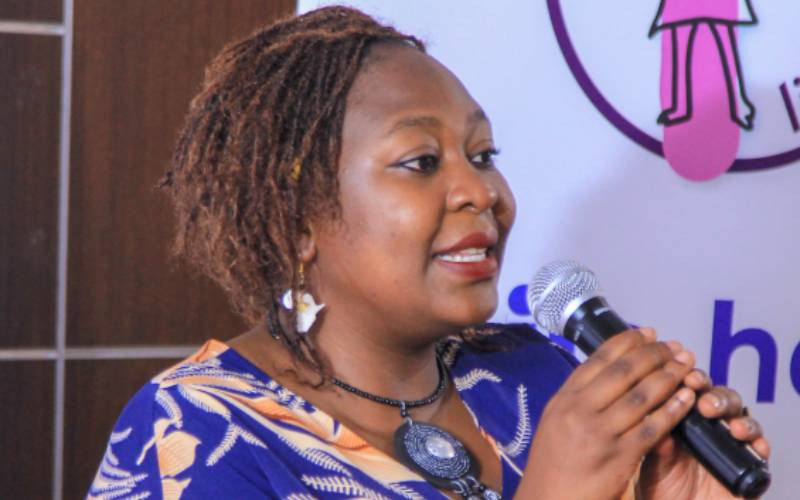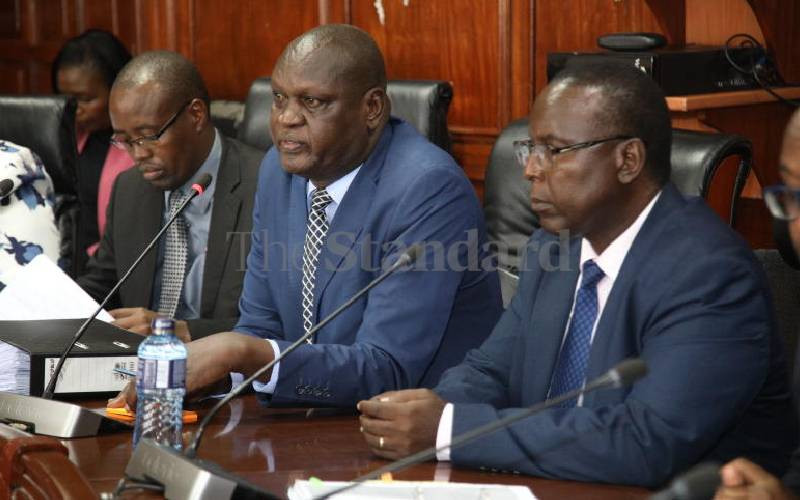One in three students in public universities is from 10 counties, a new report shows.
The Universities Statistics Report 2016/2017 by the Commission for University Education (CUE) was intended to place students in public universities in their home areas.
In a surprise finding, Kisii has 9,373 students ahead of Nairobi at 8,739 while Uasin Gishu has 8,046. The ranking is the same on gender representation, with Kisii having the highest number of male students at 5,625, Nairobi (5,064) and Uasin Gishu (4,975).
The data was gotten from 25 public and 22 private chartered universities. Analysis by gender indicated that male students surpassed female students at all programme levels in all universities.
Mandera has the least number of students at 155. Wajir (179) and Lamu (216) bring up the tail. Marsabit has 386 students, Isiolo (305) and Garissa (472).
Historical factors
In the six counties, female students make up less than one-tenth of one per cent of the total State-sponsored enrollment number of 455,515.
Skewed enrolment by region means that the counties with more students are benefiting more from the State-sponsored kitty of about Sh35 billion a year.
Further, a university education offers the best prospects in life through employment opportunities. This means students from marginalised communities are likely to face a bleak future.
The three bottom counties collectively command less than one per cent of enrollment, despite being home to significantly bigger populations.
“This disparity might be attributed to certain historical factors which may be corrected with more support from Government and development partners through affirmative policies,” the CUE notes in its report.
State-sponsored students pay only Sh16,000 in tuition fees each year, with the Government topping up with as much as Sh70,000 in additional funding.
Self-sponsored students, however, pay up to Sh560,000 a year, depending on the study programme.
The commission is calling on potential employers to partner with universities to help streamline the academic courses to their specific needs, and possibly chip in to defray the training expenses.
Such collaboration would reduce funding pressure where students’ fees account for 52 per cent of income, which is supplemented by Government contribution of 36 per cent.
Stay informed. Subscribe to our newsletter
Biggest source
Having students as the single biggest source of university funding locks out those from poorer backgrounds and compounds marginalisation.
Researchers involved in the study said the results should help the State in planning for the future as well as determine how resources can be allocated more equitably.
More emphasis could, for instance, be placed on funding primary and secondary school education in the counties that lag behind. These two crucial levels of education ultimately determine who qualifies to enter university.
It is no coincidence that Nairobi, Kisii and Kiambu, which collectively account for 20 per cent of student population in public and private universities, are home to some of the best-performing schools in the KCPE and KCSE exams.
Nairobi and Kiambu were ranked first and third richest counties in a recent report ranking the contribution of the country’s 47 regions to the national annual economic output, also known as the gross domestic product (GDP).
Lamu, which is in the category with fewest students in university, was ranked among the poorest counties.
It is not explicit from the report why the skew in university enrolment is as pronounced, especially because it does not tally with the respective populations.
Mandera, for instance, had more than a million people from the last census but it has the lowest number of students in university.
Mandera’s population is comparable to that of Kisii, Kilifi (904 students) and way ahead of Uasin Gishu.
The enrolment trend in public universities is nearly replicated in private institutions, buttressing the fact that wealth tends to follow university education.
Nairobi is home to nearly half of all private university students and accounts for 39 per cent of the total number of students in the institutions. Kiambu is second in the number of students it has in private universities while Nakuru is ranked third.
Residents in poorer counties, on the other hand, are unlikely to enroll their children in private universities after missing placement in public institutions.
Samburu, which is largely a pastoralist community, has the least number of students (19) in private universities, behind West Pokot (42) and Turkana (44).
On gender, Elgeyo Marakwet had the least disparity followed by Nairobi and Kajiado. Wajir, with a 3:1 ratio of male to female, had the highest disparity followed by Turkana and Mandera.
“The report will form a useful resource for making decisions on policy formulation, implementation, monitoring and evaluation. Accurate statistics of students will enable Government agencies plan well and allocate resources equitably,” states the report.
 The Standard Group Plc is a
multi-media organization with investments in media platforms spanning newspaper
print operations, television, radio broadcasting, digital and online services. The
Standard Group is recognized as a leading multi-media house in Kenya with a key
influence in matters of national and international interest.
The Standard Group Plc is a
multi-media organization with investments in media platforms spanning newspaper
print operations, television, radio broadcasting, digital and online services. The
Standard Group is recognized as a leading multi-media house in Kenya with a key
influence in matters of national and international interest.
 The Standard Group Plc is a
multi-media organization with investments in media platforms spanning newspaper
print operations, television, radio broadcasting, digital and online services. The
Standard Group is recognized as a leading multi-media house in Kenya with a key
influence in matters of national and international interest.
The Standard Group Plc is a
multi-media organization with investments in media platforms spanning newspaper
print operations, television, radio broadcasting, digital and online services. The
Standard Group is recognized as a leading multi-media house in Kenya with a key
influence in matters of national and international interest.








